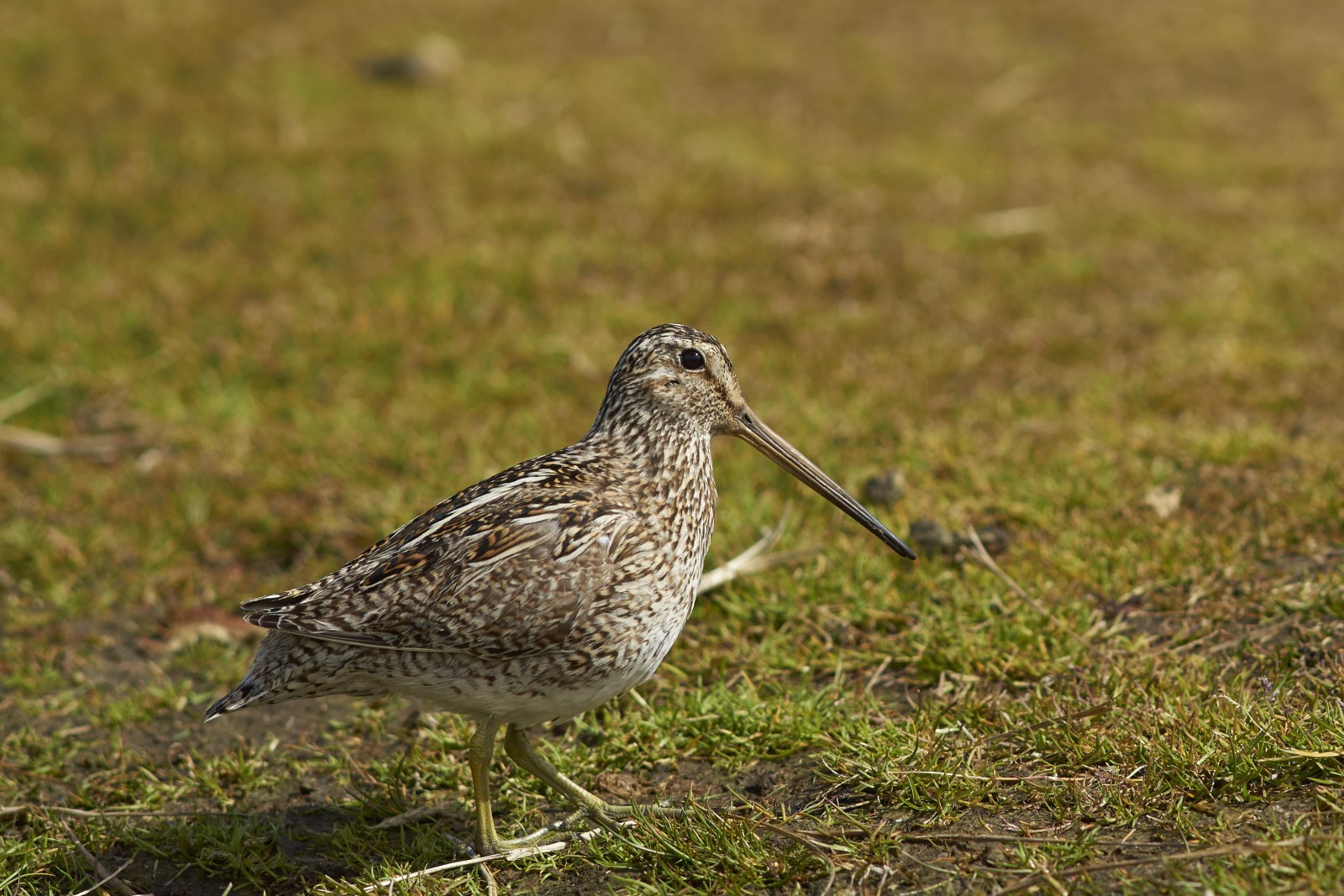Name: Magellanic Snipe, South American Snipe, Paraguayan Snipe (Gallinago magellanica magellanica)
Length: 31 cm
Weight: 110 grams
Location: South America, Falklands.
Conservation status: Least Concern.
Diet: Small invertebrates (grubs, earthworms, etc.)
Appearance: Speckled yellow, white, brown, and black, with the top being darker and the undersides fading more towards white. The most dominant feature is their long and skinny pointed bill, measuring around 70 mm, which is a greenish-yellow with a black tip. Legs and feet are a slightly lighter yellowish-green. Juveniles’ legs are a bit bluer. Difficult to distinguish from the Common Snipe.
How do Magellanic Snipe feed?
Magellanic Snipe hunt for bugs and invertebrates in mud by probing with their bills. The bills, being flexible, allow them to detect their denser prey amongst the surrounding mud.
Are Magellanic Snipe social?
Magellanic Snipe tend to be solitary birds outside of the mating and juvenile training seasons.
What are Magellanic Snipe birthing rituals like?
Mating season begins in May. Males take over a territory, then find an elevated location and give out calls referred to as “yakking”. If interested females are in the area the male will launch high in the air, fly in circles in a display known as “winnowing” or “drumming”, and then perform a rapid descent. The drop is fast enough that the males’ wings and tail feathers will create a noise.
Nests are built in hollows found on grasslands, peat bogs, heaths, swampy woodlands, and steppes. The hollows are lined with grasses. Laying season begins in August and runs through November with 2 or 3 eggs being laid at a time.
Both parents will help with the incubation period which lasts about 19 days. The hatchlings are precocial (meaning they’re already fairly advanced as soon as they hatch) and are able to join their parents in hunting for food only a few days after they hatch.
How many Magellanic Snipe are there today?
There are an estimated 8,000 breeding pairs of Magellanic Snipe found on the Falklands. There aren’t any official estimates for a worldwide population count.
3 Bonus Magellanic Snipe Facts
- Magellanic Snipes have excellent camouflaging. When they sense danger their usual response isn’t flight; instead they’ll stay still, hoping their environment will hide them.
- There is a bit of controversy surrounding the Magellanic Snipe in the birding world. Some believe that they should be separated into two subspecies – one subspecies for the northern Paraguayan group (tropical to sub-tropical), and another for the more southern Snipes (temperate).
- As mentioned above, it is fairly difficult to distinguish the Magellanic Snipe from the Common Snipe. One tip is if you spot an example in a lowlands area between May and September then it’s likely to be Magellanic as the Common tends to stick to higher elevations during that time period.






